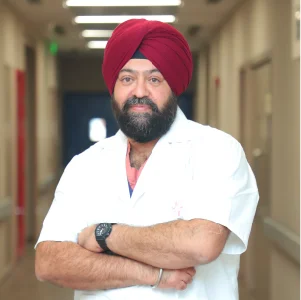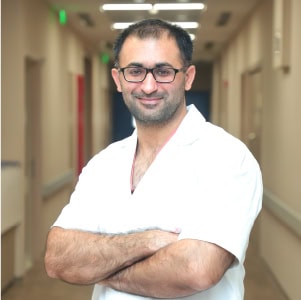Head and neck surgery involves conditions related to our mouth, tongue, throat, tonsils etc. The most common cause that leads to head and neck surgery is cancer. Leading cancer research suggests that approximately 562,328 people were diagnosed with head and neck cancers across the world in 2020. Further studies suggest that by 2030 worldwide there will be a 30% spike in the number of cases of Head and Neck Cancer.
In such a situation it is essential to find a way to deal with this kind of cancer before it goes out of hand. This is where surgical techniques get prominence, especially head and neck surgeries which aim to carefully remove the cancer cells in their early stages before they spread. So what is the best surgical technique that provides the highest level of success – Robotic Surgery, also called Robot-assisted surgery.
This is nothing but a head and neck surgery which involves robotic assistance in the form of robotic arms that performs a precise and accurate procedure by replicating the hand movements of the surgeon. This can be for conditions related to cancer or other problems or complications in the head and neck area.
In the past, open surgery was often the only way in which surgeons could understand and identify the root problem for tricky cases involving the head and neck regions. Open surgery helped them see the operating region better. This evolved towards minimal invasive laparoscopic procedures, but it still did not eliminate the chances of blood loss and infections.
Advanced minimally invasive surgical options like robotic surgery require a few small incisions, specialised precision based surgical equipment and a camera, with which an experienced surgeon performs successful and safe surgeries.
The use of special long-handled tools along with magnified 3D imagery enhances the success rates of all surgeries using the robotic system.
Our active robotic technology, a trailblazer in fine precision robotic surgery, employs a unique set of robotic arms for enhancing a surgeon’s skillset. The robotic system helps:
- Execute procedures under the watchful supervision of a skilled surgeon.
- Provides precision and dexterity in cutting and milling processes.
- Elevates clinical efficiency by ensuring utmost accuracy.
- Eliminates the likelihood of recurring surgeries and related issues.
- A camera arm and four mechanical arms equipped with long & fine surgical instruments.
- A surgical console enabling the surgeon to control the arms while positioned near the operating table.
- A high-definition, magnified, 3D view of the surgical site provided by a camera.
- The surgeon leads a team and robotic arms offer complete control to the surgeon from the console with fully wristed articulation.
- Intelligent feedback is provided to assist doctors in optimising surgical manoeuvres.
- Fourth-generation robotic instrument arms enable the placement of ports in a straight line, facilitating seamless multi-port procedures.
- A universal arm design allows the surgeon to insert the endoscope on any arm at any point during the procedure.
- The robot is equipped with longer instruments and thinner arms to improve range of motion and enhance precision, while reducing the risk of collision in narrow and delicate areas.
The Procedure:
Highly precise surgery for benign and malignant tumours of the mouth and throat are preferred to be performed using robot assisted technology.
The Planning:
- The doctors will have to explain their diagnosis for patients to form an informed decision about the procedure.
- Then the patient proceeds to get high-end CT scans performed of the localised area for the surgery.
- These CT scans are used to build a comprehensive surgery plan.
The Execution:
- Patient is synced with the robotic system and stabilised for surgery.
- Surgical ports are introduced to the patient terminal, offering a 3D view for the surgeon’s camera console.
- Surgeons perform the surgery as the AI replicates their movements on the patient’s end.
- Robotic AI keeps reviewing the procedure in real time to assist the surgeon by making accurate cuts with the robotic arm.
Head and neck surgeries require a highly delicate approach as the slighted human error can cost a patient’s life dearly. This makes robotic head and neck surgery significantly beneficial for both the patient and the surgeon.
- Overall better clinical outcomes.
- Quicker recovery time.
- Smaller scars.
- Shorter hospital stays.
- Reduced blood loss.
- Lower risk of infection.
- Reduced pain during recovery.
A Robotic System is a fully automated, active technology. It offers multiple benefits to both the surgeon and the patient. It is the most advanced surgical equipment and the benefits of this robotic system can be summarised as:
- Possibility of doing surgery in constrained bodily areas
- Better visualisation with HD magnified 3D imaging superior to the naked eye.
- Greater precision with minimised human errors using robotic arms.
The CK Birla Hospital employs state-of-the-art surgical techniques to improve your quality of life. Surgeons can now seamlessly conduct vital procedures with enhanced ease, flexibility, accuracy, and precision, all thanks to the latest advancements in technology, ensuring optimal clinical results.
Highlights of Robotic Surgery
- Multidisciplinary team approach.
- Innovation-driven healthcare solutions.
- Fast and comprehensive recovery.
- World-class physiotherapy support.
- End-to-end rehabilitation support post-surgery as applicable.
No, they differ despite both being minimally invasive procedures. Laparoscopic procedures involve the surgeon using hand-held tools and instruments. In contrast, robot-assisted surgery allows the surgeon to operate a console and a 3D monitor to control robotic arms.
A skilled and experienced head and neck surgeon performs the entire procedure using a robotic arm. The surgeon, stationed at a console in the operating theatre, directs the robotic arms to execute the procedure. Real-time recording by a video camera enhances the surgeon’s view of the operating area.
No, the decision depends on the patient’s condition and the body’s ability to withstand surgery. In complex cases surgeons often prefer robotic-assisted surgery. The increased range of motion and flexibility of robotic arms provide precise movements and reduces the risk of errors.
Robotic surgery, with its accuracy, minimal blood loss, reduced discomfort, and lower infection rates, surpasses conventional surgery. Despite potential higher costs, it remains an attractive option due to its undeniable benefits in surgical outcomes and patient recovery.
Incision healing typically takes three to four weeks, and most individuals can resume work two to three weeks post-procedure.
No, robotic-assisted surgeries involve tools and controls distinct from other minimally invasive procedures. They demand trained medical professionals and specific equipment. At CK Birla Hospital, Gurugram, our team comprises experienced and qualified robotic surgeons, ensuring excellent surgical outcomes.



